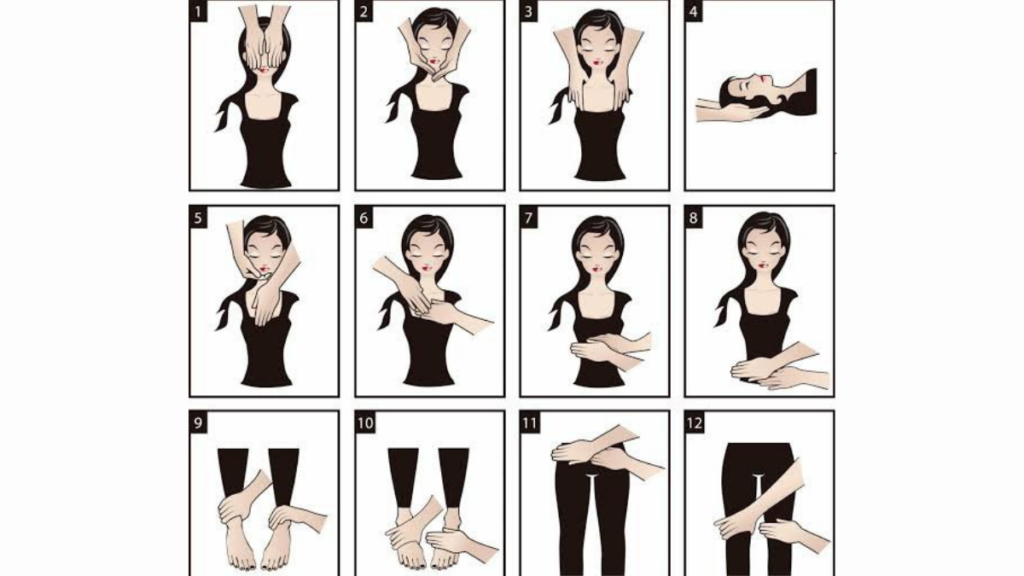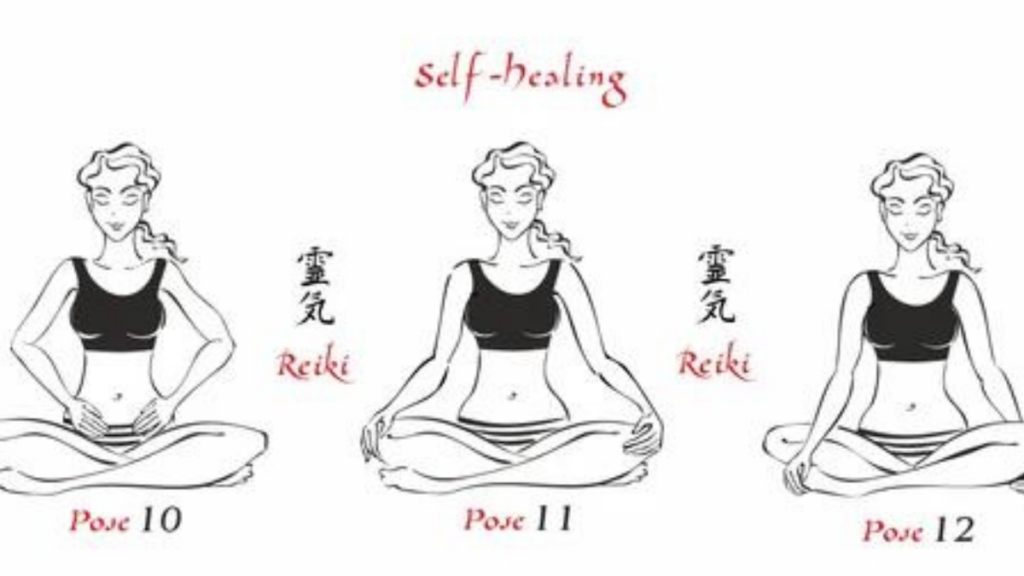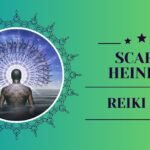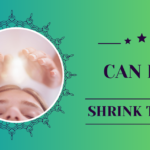1. Introduction to Reiki
Power of Reiki Hand Positions: Reiki, a Japanese form of alternative medicine, is rooted in the belief that a life force energy flows through us and is what causes us to be alive. The term “Reiki” is derived from the Japanese words “rei” (universal) and “ki” (life energy). Developed by Mikao Usui in the early 20th century, Reiki is based on the principle that by channeling this universal energy, practitioners can encourage healing and balance within the body.
Reiki sessions involve a practitioner placing their hands lightly on or just above a person’s body in specific positions. The aim is to facilitate the flow of energy, promoting relaxation, reducing stress, and supporting the body’s natural healing processes. Reiki is now widely recognized and used globally, integrated into various wellness practices and healthcare settings.
2. Understanding Reiki Hand Positions
Central to Reiki practice are the hand positions—a series of placements that correspond to different areas of the body. Each position is believed to channel energy to specific parts of the body, addressing physical, emotional, and spiritual imbalances.
The 12 Main Reiki Hand Positions:

- Crown (Top of the Head): Enhances spiritual connection and clarity.
- Third Eye (Forehead): Improves intuition and mental clarity.
- Throat: Aids communication and self-expression.
- Heart: Promotes love, compassion, and emotional healing.
- Solar Plexus: Strengthens personal power and confidence.
- Stomach: Balances emotions and digestion.
- Pelvis: Grounds and stabilizes physical energy.
- Upper Back: Relieves tension and promotes relaxation.
- Middle Back: Supports emotional release and stress reduction.
- Lower Back: Eases lower back pain and grounds energy.
- Knees: Promotes flexibility and supports grounding.
- Feet: Grounds energy and enhances stability.
Each of these positions is thought to correspond with the body’s energy centers (chakras) and meridian points, facilitating the flow of energy throughout the body.
3. The Science Behind Reiki Hand Positions
The scientific community has begun to explore the mechanisms behind Reiki and its hand positions. While the concept of universal life energy is not universally accepted in Western medicine, several studies have indicated potential benefits of Reiki.
Key Studies and Findings:
- Relaxation and Stress Reduction: A study published in the Journal of Alternative and Complementary Medicine found that Reiki significantly reduced stress and anxiety levels in participants.
- Pain Management: Research from the University of Arizona highlighted that recipients of Reiki reported lower levels of pain and discomfort.
- Physiological Effects: Studies have shown that Reiki can influence heart rate variability, indicating improved autonomic nervous system function and relaxation responses.
While more research is needed to fully understand Reiki’s mechanisms, the existing evidence suggests that Reiki hand positions can indeed promote relaxation and reduce stress.
Also Read:The Power of Reiki and Chakra Healing
4. How to Use Reiki Hand Positions

Using Reiki hand positions effectively requires a combination of proper technique, posture, and intention. Here’s a step-by-step guide to help you get started with both self-healing and treating others.
Self-Healing:
- Prepare: Find a quiet space and sit comfortably. Take a few deep breaths to center yourself.
- Set Intention: Clear your mind and set a positive intention for your session.
- Begin with the Crown: Place your hands gently on the top of your head. Hold for 3-5 minutes, focusing on channeling energy.
- Move Sequentially: Progress through each of the 12 main hand positions, spending 3-5 minutes on each spot.
Healing Others:
- Create a Calm Environment: Ensure the recipient is comfortably lying down in a quiet space.
- Set Intention Together: Both you and the recipient should set a positive intention for the session.
- Start at the Crown: Lightly place your hands on the top of the recipient’s head. Hold for 3-5 minutes.
- Move Sequentially: Continue through each hand position, maintaining a gentle touch and focusing on the flow of energy.
Remember, the key is to remain mindful and present throughout the process, allowing the energy to flow naturally.
5. Benefits of Regular Reiki Hand Positions
Incorporating Reiki hand positions into your wellness routine can offer numerous short and long-term benefits.
Short-Term Benefits:
- Immediate Relaxation: Many individuals report a sense of calm and relaxation immediately after a Reiki session.
- Stress Reduction: Regular practice can help manage stress levels, promoting overall well-being.
Long-Term Benefits:
- Enhanced Emotional Health: Over time, Reiki can support emotional balance and resilience.
- Improved Physical Health: Consistent practice may alleviate chronic pain and support the body’s natural healing processes.
- Spiritual Growth: Reiki can deepen your connection to your own spirituality and enhance your intuitive abilities.
Whether you practice Reiki daily or a few times a week, the cumulative benefits can significantly enhance your overall health and well-being.
6. Case Studies and Testimonials
Real-life stories provide powerful evidence of Reiki’s benefits. Here are a few examples:
Case Study 1: Reducing Anxiety
Sarah, a corporate executive, started practicing Reiki to manage her anxiety. After a month of regular sessions, she reported feeling more balanced and less overwhelmed by her responsibilities. “Reiki hand positions have become my go-to tool for stress relief,” she says.
Case Study 2: Pain Management
John, a chronic pain sufferer, found significant relief through Reiki. “I was skeptical at first,” he admits, “but the consistent use of Reiki hand positions has reduced my pain levels and improved my quality of life.”
Testimonial: Enhancing Well-being
Maria, a yoga instructor, integrates Reiki into her routine. “Reiki complements my yoga practice perfectly. I feel more connected and grounded, and my overall well-being has improved,” she shares.
7. Conclusion
Reiki hand positions offer a powerful tool for enhancing relaxation, reducing stress, and promoting overall well-being. By understanding and incorporating these positions into your wellness routine, you can unlock the transformative benefits of Reiki energy healing.
Ready to experience the power of Reiki hand positions? Start your journey today and discover the profound impact it can have on your life. Share your experiences and join the community of individuals who have embraced this ancient practice. Feel free to leave comments and testimonials below—your story could inspire others to begin their own Reiki journey.
8. Frequently Asked Questions (FAQs)
1. What is Reiki and how does it work?
Reiki is a form of energy healing that originated in Japan. It involves the transfer of universal life energy from the practitioner to the recipient through the hands. The energy flows through specific hand positions to balance the body’s energy, promoting physical, emotional, and spiritual healing.
2. Do I need any special training to practice Reiki?
Yes, to practice Reiki, you need to be attuned by a certified Reiki Master through a series of initiations. These attunements open up the energy pathways in your body, enabling you to channel healing energy. Reiki training typically involves three levels, with each level providing deeper knowledge and skill.
3. How often should I practice Reiki hand positions?
The frequency of Reiki practice depends on individual needs and goals. For overall wellness and stress reduction, practicing a few times a week can be beneficial. For chronic conditions or emotional issues, daily practice might be more effective. Consistency is key to experiencing long-term benefits.
4. Can Reiki be used in conjunction with other treatments?
Absolutely. Reiki can complement conventional medical treatments by promoting relaxation and reducing stress, which can enhance the body’s natural healing processes. Always inform your healthcare provider about any complementary therapies you are using to ensure they work well with your medical care.
5. Are there any side effects of Reiki?
Reiki is generally considered safe with no known harmful side effects. Some people may experience a temporary intensification of symptoms as the body begins to heal, known as a “healing crisis.” This is a normal part of the healing process and usually resolves quickly. It’s important to stay hydrated and rest as needed after a Reiki session.
—







